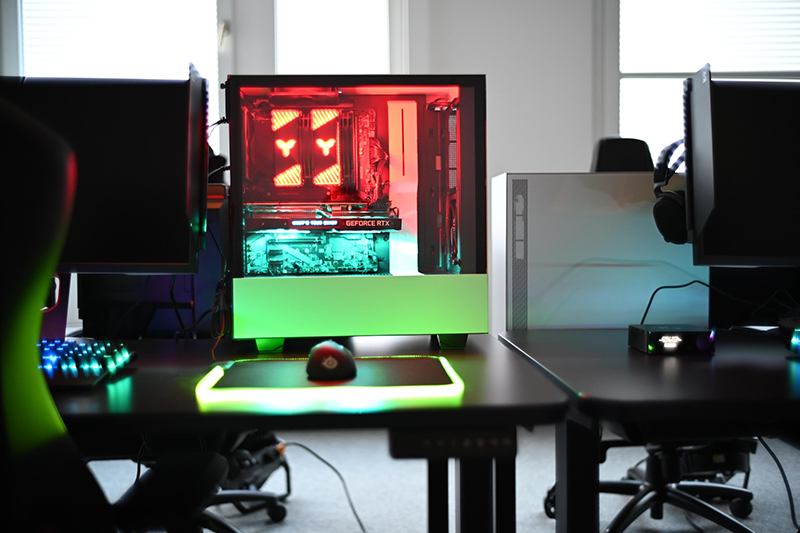
“A new ray tracing GPU is about to be released on the market next week. Should I buy it, or wait and see if there’s a better one to be released from another brand? After all, I already have a ray tracing GPU that was released last year. What should I do?”
This is a common situation that most of us GPU enthusiasts have faced. And unfortunately, there is no clear answer to this. However, there are ways to make your decision process a bit easier, and that is by comparing GPU benchmark results. Many of the technical devices that are released in the consumer market today are tested and benchmarked in order to ease consumers’ purchase decisions, which can give answers to questions like “is the more expensive version of gadget X, actually worth the money?”
GPU comparison and the role of benchmarking
Comparing GPU features and specs can help you to some extent when making a purchasing decision. However, in some cases an indirect comparison would be more helpful. Indirect GPU comparison means that you use a third-party tool, like a GPU benchmarking tool, to compare and evaluate a device, and it is a great way to explore how a device performs in real action. Although some devices on paper may have better specs than others, they may actually perform worse under some specific content or usage conditions. Ultimately, consumers acquire devices for specific purposes. The purpose for which we acquire electronic devices is typically communication, gaming, or work. Therefore, some objective tool, like a benchmark, that can guide the consumer towards the best option is very much welcomed.

Image source: Pixabay
The role of benchmarks is to orient the consumer towards the best choice according to his/her needs and requirements. The benchmark is like a friendly guide that helps you navigate the ever-changing world of technology. It’s like a time traveler that tracks a product’s journey through different generations, allowing you to follow the evolution of related items or those within the same family.
Benchmarks are also a very common tool used by the media. Whenever a new tech gadget hits the market, all media publications crowd to test, evaluate, and review it. Media reviews are great since they typically have access to a much broader and newer range of devices, which allows consumers to get a useful glimpse of the performance. Media and websites that publish benchmark results, such as www.gsmarena.com or TomsHardware.com are like treasure maps that reveal the hidden potential of various products. These websites use benchmarking tools like Basemark’s GPUScore that provide a numeric score that allows consumers to differentiate between devices. It’s like having a backstage pass to the world of gadgets, providing an in-depth look at a device’s performance in relation to the benchmark.
GPU benchmarking tools
GPU benchmark tools, such as GPUScore, help you to compare the speed, performance, and the efficiency of the GPU in different devices. The benchmark is done by running a workload that stress tests the GPU. The workload itself is similar to the content that the consumer will run on the device, such as gaming content. Gaming applications are known for having demanding graphics assets. Therefore, benchmarks mimic actual gaming content that contains detailed, eye-catching, highly demanding graphics.
A consumer can either test their devices on their own with the GPU benchmark tool or visit media websites that publish benchmark results. The result of running a benchmark on a device is a numeric score. By evaluating the score against other devices scores, the consumer will be able to easily compare the GPU performance and create an opinion on how the product will perform.
Moreover, there are different types of benchmarks. Based on the content, processes, and score calculations in a benchmark, different benchmark solutions will fall under different categories. There are specific benchmarks for testing specific features, or device categories. For example, GPUScore In Vitro has been developed to measure the performance of different devices that include ray tracing features. Naturally you can say it’s a ray tracing benchmark. Another example is GPUScore The Expedition, which is a benchmark developed to compare the performance of smartphones running on Android and iOS. This means that the workload in the benchmark has been optimized to run on smartphones and consequently, would not be suitable to run on a desktop.
Example of benchmark content from GPUScore The Expedition
Ensuring reliable results from GPU Benchmarks
Not all benchmarks can be considered reliable. There are several factors that impact the reliability of a benchmark, which is something that is very important to be aware of.
The speed of new technology advancements
One of GPU benchmarks’ most feared enemies is time. By “time” we mean that the reliability of the benchmark is heavily dependent on how fast new technology appears. For example, a GPU benchmark for smartphones developed 4 years ago, might no longer be relevant to use since the benchmark workload isn’t necessarily up-to-date with the technology in today’s smartphones. Therefore, new benchmarks are constantly developed to meet the demands of the market.
The adoption of benchmarks
Another factor or a sign of a benchmark’s reliability is the adoption of the benchmark. A benchmark’s adoption in the market is heavily dependent on a benchmark’s longevity. More simply put, a robust and reliable benchmark usually gets more attention. The more a benchmark tool is visible and used by different stakeholders, such as media and consumers, the more attention is given to the benchmark by the manufacturers. A widely utilized benchmark gives a good insight into what end-users are expecting from the hardware, and it can also offer important data on how devices rank against each other.
Reliability of the development
Last but not least, you may question how the development of the benchmark impacts the accuracy of the results. Which is a valid question.
A reliable benchmark should be developed in collaboration with multiple manufacturers in the market, such as SoC hardware vendors, SoC technology vendors, consumer technology OEMs.
Thus, each vendor, of course, wants to showcase its strengths and promote its best solutions. However, this very aspect ensures the benchmark’s impartiality. As each vendor tries to tug the balance in their favor, the benchmark development is pushed to a mid-position, becoming this way equidistant from all parties. Hence the more stakeholders that get involved in the development of a benchmark, the more the benchmark itself becomes increasingly reliable and balanced.
Pushing the Market Forward
We can say that benchmarking is actually the spinning wheel which pushes the market forward. The market proposes, the benchmark evaluates, then the market adapts. By this adaptation, the market actually evolves, which creates the need for a new benchmark, and the cycle repeats itself. Considering that the consumer is the one who keeps the market alive, benchmarking thus becomes a balancing tool between the consumer and the manufacturer. So, in the end, we could say that benchmarking empowers to some extent consumers to decide on the evolution of the market.
